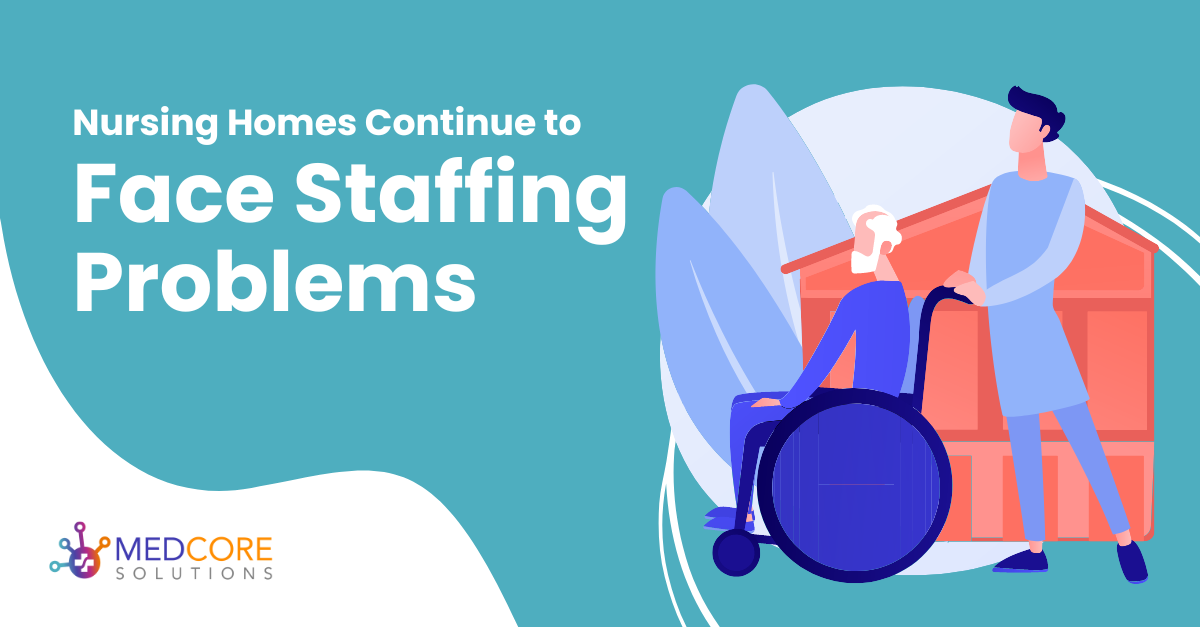The AHCA/NCAL estimates that by January 2023, nursing homes won’t be staffed to their pre-pandemic levels until 2027. However, making long-term investments initially could help with staffing concerns.
Effects of COVID-19
While all sectors of healthcare were greatly impacted by the COVID-19 pandemic, nursing homes were hit especially hard over the last three years. The elderly population was at the most risk for contraction, serious illness, and/or death as a result of COVID-19. Employees were significantly impacted, too.
According to a study by the American Health Care Association and National Center for Assisted Living (AHCA/NCAL), assisted living facilities have the greatest staffing issues and have lost 210,000 jobs as a result of COVID-19. This analysis came from the Bureau of Labor Statistics (BLS) over the last three years.
Furthermore, the number of nursing home employees decreased from nearly 1.5 million to 1.3 million between February 2020 and December 2022, a decline of 210,000 positions. The survey observed that since 1994, this sector has not experienced such drastic decreases in the workforce.
Cause of Low Staffing Levels
Many individuals are aware of the persistent issue of understaffing in nursing facilities, but the causes are not well understood. Understaffing can also be caused by unavoidable elements like a lack of job applicants. Other times, owners and management of assisted living facilities purposefully understaff their institutions to cut costs.
COVID-19 had a large impact on the staffing of these facilities over the last few years, but there are clearly other reasons for the lack of staff in these facilities. These include the cost of labor, issues with paying for overtime, staff turnover, and the false reporting of staff levels.
On the other hand, the low staffing levels may be brought on by the slower-than-anticipated rate of job growth in 2022. Over the past nine months, nursing facilities have gained 3,700 jobs on average per month. At this rate, pre-pandemic staffing levels in nursing facilities wouldn’t be reached until 2027.
Preventing Staffing Issues in Nursing Homes
To protect each resident’s physical, mental, and emotional wellness, it is essential to prevent understaffing in nursing homes and assisted living facilities. MedCore can help your elderly care facility start addressing staffing shortages today!
The following steps may help your facility in preventing further staffing shortages:
- Identify the overall care and health needs for residents.
- Specify the exact nurse staffing levels.
- Assess the proper nurse staffing levels to suit the demands of the residents.
- Analyze the information to see whether the staffing is adequate.
- Identify any discrepancies between the current staffing levels and the recommended nursing staffing levels.
Looking to Tackle Staffing Shortages in your Healthcare Practice?
MedCore Solutions can help your practice tackle staffing shortages and challenges with medical billing. MedCore is an industry leader in streamlined medical billing and administrative services. MedCore’s specialists offer a solution to industry-wide staffing shortages, all while helping your practice run smoothly. MedCore tailors solutions to the needs of each medical practice so providers can focus on what matters most: taking care of their patients. Learn more at https://medcoresolutions.com/.
Reference
NursingHomeAbuse.org. Understaffing in nursing homes: Risks and consequences. (2023, March 23). Retrieved from https://www.nursinghomeabuse.org/nursing-home-neglect/understaffing/#:~:text=Overtime%20Pay%20Issues,to%20ensure%20shifts%20are%20covered.
RevCycleIntelligence. TechTarget. (2023, January 23). Significant staffing challenges continue for nursing homes. Retrieved from https://revcycleintelligence.com/news/significant-staffing-challenges-continue-for-nursing-homes

